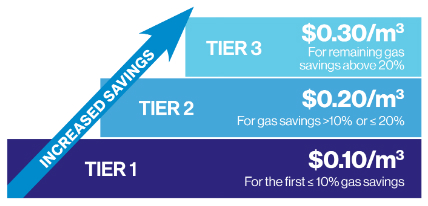In 2017, the province of Ontario advanced its role in the fight against climate change with the launch of its provincial cap and trade program. Launched on January 1, the initiative aims to help the province lower its total greenhouse gas (GHG) emissions by imposing “caps” for GHG emitters and lowering them each year. Program participants who fall under their cap can sell cap and trade permits to those who cannot, thereby incentivizing all partners to explore new and innovative ways of reducing their GHG outputs. Moreover, funds raised by permit purchases are being earmarked for future green initiatives and – ideally – support for cap and trade players.
While the program is voluntary for low-end emitters, participation is mandatory for electricity importers, large-scale fuel suppliers, and facility or natural gas distributors that emit more than 25,000 tonnes of GHGs per year. As such, while many cap and trade participants will reap rewards from the program, large-scale emitters will be subject to expenses that will be absorbed through higher service rates to their customers – property manager included.
“All property owners are paying for cap and trade in their natural gas bill,” says Fiona Oliver-Glasford, Enbridge Manager, Carbon Strategy, explaining, “Even though natural gas is a clean burning fuel, it is still a fossil fuel so it does have GHGs associated with its use. Therefore, when you take action to reduce your use of natural gas through more efficient ways of using your energy, you will reduce the GHGs you emit and thus the carbon price you are paying.”
On average, Ontario’s cap and trade program has increased property owners’ gas bills by 12%. This, says Fiona, has motivated many to pursue energy efficient changes or retrofits to lower their usage costs: “Natural gas is still the most effective way to heat homes and buildings in this province, and remains so even with cap and trade. The challenge, though, is finding long-term ways to reduce the consumption of natural gas in order to better manage the costs imposed by this program.”

For its part, Enbridge is responding to the challenge with programs that assist customers in accurately assessing their natural gas usage, spotlighting potential savings, and making changes that will have a sustainable impact on their energy bills.
Enbridge’s Run it Right program, for example, pairs commercial building stakeholders with Enbridge Energy Solution Consultants (ESC) who can uncover and monitor no-cost or low-cost improvements in a building that will lead to lower gas consumption. What’s more, buildings that carry out the energy-saving measures identified thru Run it Right are eligible for thousands of dollars to offset any associated costs incurred.
Property owners eyeing an energy-related retrofit or capital project (e.g. boiler replacement) can also receive financial support through Enbridge’s Commercial Custom Retrofit Incentive Program. Here again, ESCs work with customers to take an accurate profile of the building’s natural gas usage, calculate the savings of potential upgrades or retrofits, assist with project planning, and provide a tiered incentive based on the cubic metres of natural gas the project is projected to save.
“We’re here to help our customers reduce their natural gas consumption. So when one of our customers is considering some form of property retrofit or capitol project, we’ll go that building, we’ll look at how much natural gas they’re using and where it’s being used, we’ll crunch those numbers, and then come back with findings telling them how effective the proposed project will be in reducing their gas consumption,” explains Chris Hamilton, Enbridge Team Lead for Large Commercial Energy Solutions, adding, “Then, once the project is approved and completed at the site, we’ll pay them their incentive from day one – no waiting.”

It’s thanks to consultations and energy efficiency programs like these that Enbridge has reduced its customers’ consumption by a total of 11.1 billion cubic metres of natural gas between 1995 and 2016. In addition to contributing significantly towards the province’s cap and trade goals (and thereby easing price increases down the road), these reductions have helped property owners and their tenants pursue greener habits and healthier bottom lines.
To keep this momentum going, Fiona adds, “Property managers need to stay engaged and understand how Ontario is evolving the program. The costs will presumably go up, so it’s important for all of us to stay active in this discussion and ensure the province is doing its part to manage those costs and put the funds from this program to good use.”
To learn more about Enbridge’s energy saving programs and incentives, visit:
www.enbridgegas.com/commercial or www.enbridgegas.com/corporate/ontario-clean-energy-future/cap-and-trade. To contact an Enbridge Energy Solutions Consultant (ESC), phone 1-866-844-9994 or email energyservices@enbridge.com.





